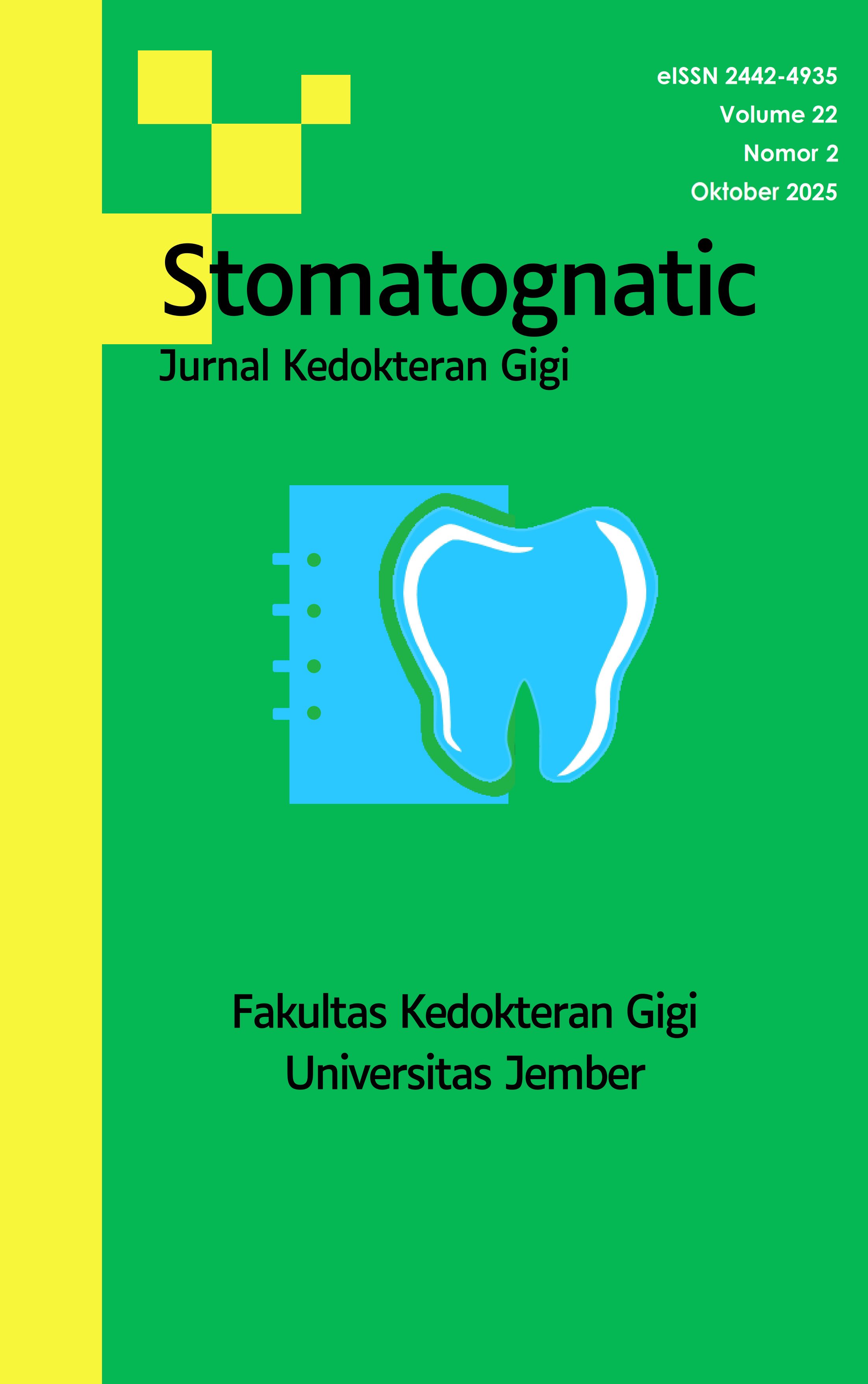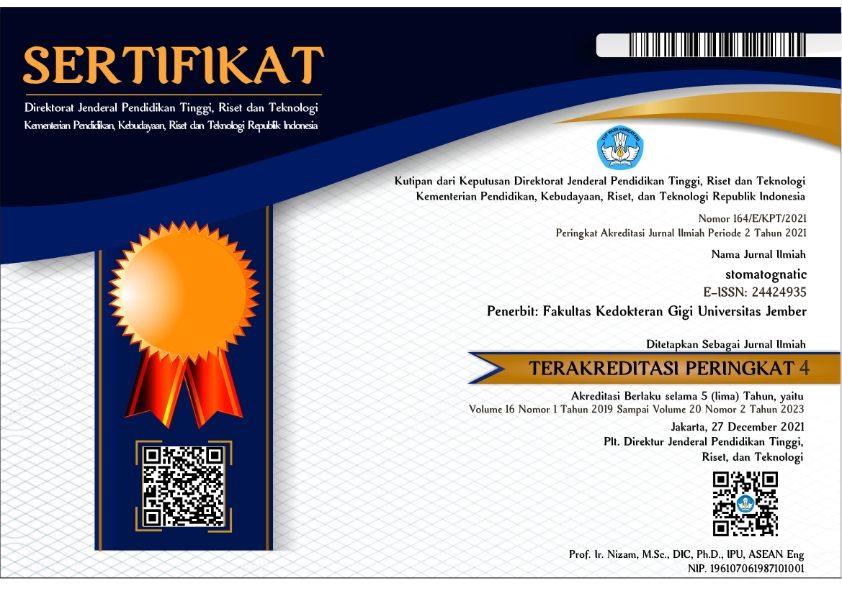Analisis Asimetrisitas Ketinggian Kondilus pada Kondisi Edentulous Berdasarkan Klasifikasi Kennedy Melalui Radiograf Panoramik
DOI:
https://doi.org/10.19184/stoma.v22i2.53739Abstract
The prevalence of tooth loss (edentulism) in Indonesia reaches 21.2%. This condition can impair masticatory function and lead to uneven distribution of occlusal forces on the temporomandibular joint (TMJ). Asymmetry in mandibular condylar height resulting from tooth loss has been reported in 54.2–70.8% of patients with temporomandibular disorder (TMD) symptoms. The aim this research is to analyze differences in condylar height asymmetry among edentulous patients based on Kennedy classification (Class I, II, III, and IV). This was an analytical observational study with a cross-sectional design, using 120 panoramic radiographs from the Radiology Department of the Dental and Oral Hospital, Jenderal Soedirman University. Condylar asymmetry was measured using the Habets index, and data were analyzed using the Chi-Square test. A total of 51.67% of respondents showed condylar asymmetry, with the highest proportion in Kennedy Class II (66.67%) and the lowest in Class IV (33.33%). Statistical analysis revealed a significant difference between groups (p = 0.049). Posterior tooth loss (Kennedy Class I and II) poses a higher risk of condylar asymmetry compared to anterior tooth loss (Class IV). These findings may serve as a reference in planning rehabilitative treatment to prevent TMJ complications.







